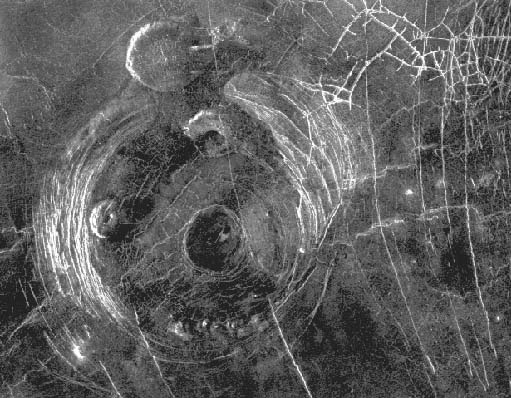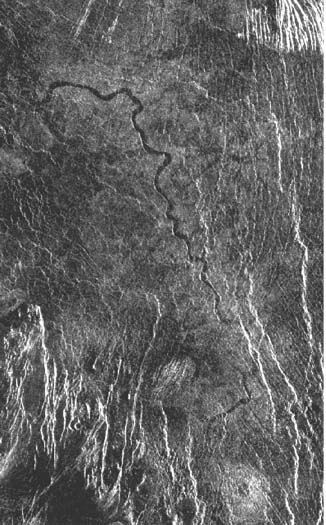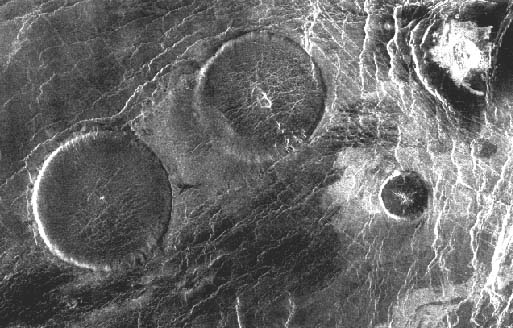Coronae on Venus
 NASA image from Magellan spacecraft.
NASA image from Magellan spacecraft.
Aine Corona is on the unique features of Venus imaged by the high-resolution radar mapping mission of Magellan. Found nowhere else in the solar system, these features are attributed to an upwelling of extremely viscous mantle material, causing the surface to bulge outward. Aine Corona is in the plains south of Aphrodite Terra. It is about 300 km across. The coronae usually have volcanoes in and around them and lava flows into the surrounding area. There is one of the pancake dome features at the top of the image; it is about 35 km in diameter. The white spots are impact craters with their surrounding ejecta. The prominent cracks in the surface are thought to form because magma beneath the surface
follows pre-existing fracture patterns. When eruptions or other
movements of the magma occur, the magma drains from the fractures
and the overlying surface rock collapses. The smooth, flat region in the center of
the corona is probably a relatively young lava flow.
The data for this image were obtained by Magellan in January
1991.
|
Index
Venus Concepts
Solar System Concepts
Solar System Exploration
References
Chaisson & McMillan,
Ch 9. |


